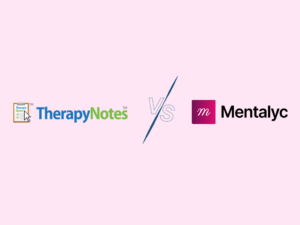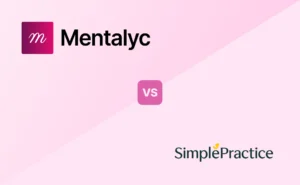Feeling overwhelmed by the sea of CPT codes? Get ready to explore one of the most crucial ones: CPT Code 96127. Whether you’re an experienced therapist or a newly minted counselor, understanding this code is essential for your practice. It’s all about those rapid emotional and behavioral assessments that can genuinely make a difference for your patients. In this article, we’ll explore everything you need to know about 96127 – from its coverage to the best billing practices. So grab your stress ball, and let’s uncover the secrets of the coding world together!
What is CPT Code 96127?
CPT Code 96127 is useful for conducting brief emotional and behavioral assessments in mental health practice. These assessments are essential for gaining deep insight into your client’s mental well-being and serve as valuable tools in your therapeutic toolkit, enabling you to monitor your client’s emotional state effectively.
Consider:
What kinds of concise assessments do you find most beneficial in your practice?

New! Transfer your notes to EHR with a single click. No more copy-pasting.
How do you currently evaluate your client’s emotional and behavioral health rapidly?
What’s Covered Under CPT Code 96127?
This code provides a range of brief screenings for:
Depression
Anxiety
Substance abuse
It’s a helpful tool for quickly gaining insight into a client’s mental health without requiring a full evaluation.
Time and Comparison
These assessments are designed to be quick and efficient, taking only 15 minutes or less. They are shorter than other more comprehensive psychological tests covered by different CPT codes, making them the express lane of mental health assessments. This simplicity and efficiency should reassure you in your practice, making you feel more efficient and effective.
Brainstorm:
Do you prefer brief assessments or more comprehensive evaluations? Why?
How do you ensure efficiency without compromising the quality of your assessments?
Why CPT Code 96127 Matters in Mental Health Practice
Don’t simply consider CPT Code 96127 as a routine checkbox exercise. It’s a valuable tool that enables you to:
Identify potential issues at an early stage
Monitor your client’s progress over time
Deliver data-informed care
Justify your treatment plans to insurance companies
This code maximizes efficiency and effectiveness, providing essential insights without consuming excessive time. When you next connect with your client, remember that CPT Code 96127 is there to support you!
Show Me the Money!
Understanding CPT Code 96127 is vital for billing and getting proper compensation. Reimbursement rates for this code can vary widely, from $5 to $20 per assessment, depending on location and insurance provider. Therapists working in busier urban areas may receive higher rates, while those in rural settings may receive the lower end of the spectrum. It’s important to remember that every bit of reimbursement adds up, so familiarizing yourself with this code is financially wise for your practice.
To maximize your reimbursement, it’s important to keep the following tips in mind:
Thoroughly review and double-check your documentation.
Stay informed about payer policies to ensure compliance.
Be proactive in negotiating rates with insurance companies.
CPT Code 96127 Modifiers: Your Secret Weapon
Modifiers are two-digit codes used to provide additional information about the service provided. They help clarify the circumstances surrounding the testing and ensure accurate reimbursement. Here are some critical modifiers for CPT Code 96127:
52 (Reduced Services): Apply this modifier if a test is partially completed or the patient cannot finish it as planned. This modifier signals that the service provided was less comprehensive than initially intended, necessitating an adjustment in reimbursement to reflect the reduced scope of the service.
53 (Discontinued Procedure): Use this modifier when a test is stopped before completion due to patient discomfort, medical issues, or other unforeseen problems. This modifier communicates that the service was interrupted, and reimbursement should be adjusted for the incomplete service.
91 (Repeat Clinical Diagnostic Laboratory Test): This modifier is appropriate when the same test needs to be repeated on the same day or within a short period, often due to issues like test failure or errors in administration. It indicates that a duplicate test was performed and ensures proper reimbursement for the additional effort.
59 (Distinct Procedural Service): Employ this modifier when conducting a separate, distinct service or test on the same day as another primary service. This modifier clarifies that the additional service is not part of the primary procedure and should be reimbursed independently rather than bundled with the primary service.
Using modifiers correctly is essential for securing appropriate reimbursement and avoiding claim denials, mainly due to bundling issues. Modifier 59, for example, indicates that a service is distinct from others provided on the same day. Proper application of these modifiers not only ensures accurate payment but also helps prevent frustrating denials. Investing time correctly understanding and applying these modifiers will pay off smoother billing processes and better financial outcomes for your practice.
Think About:
What challenges have you faced in getting reimbursed for CPT Code 96127?
How familiar are you with using these modifiers in your billing process?
Documentation Requirements for CPT Code 96127
When documenting CPT Code 96127, it’s crucial to understand the necessary details clearly. If you’re uncertain about the specifics, there’s no need to worry – we’re here to offer guidance!
Essential Elements for Documenting CPT Code 96127
First things first, you’ll want to make sure you’ve got these critical elements in your notes:
The specific assessment tool used (e.g., PHQ-9, GAD-7)
The client’s responses or scores
Your interpretation of the results
Any follow-up plans or recommendations
These details will help demonstrate what happened during the assessment.
Dotting Your I’s and Crossing Your T’s
Now, let’s dive a bit deeper. Your documentation should also include:
The date of service
The client’s name and demographic information
The reason for the assessment
The time spent administering and interpreting the test
Pro tip: Always explain why you chose the specific assessment tool, as it can justify the medical necessity.
Remember always to maintain thorough documentation. Taking a few minutes to gather your ideas and start documenting is essential. Good documentation is not only about financial reimbursement but also about providing exceptional care and recording your client’s progress.
Questions to Consider:
What documentation practices have you found most effective?
How do you ensure your notes are both thorough and concise?
Frequency Guidelines for Billing CPT Code 96127
How Often Can You Bill?
The frequency you can bill CPT Code 96127 varies by insurance provider. While there’s no universal rule, most insurers allow billing this code once per client visit. It’s important to check each payer’s guidelines to avoid claim rejections and ensure compliance. Use the code judiciously to maintain good standing with insurers.
Payer-Specific Rules
Insurance providers have different regulations regarding the frequency of billing CPT Code 96127. Some may allow claims up to four times yearly, while others may have different limits. Familiarize yourself with each insurer’s rules to prevent future claim denials.
Best Practices for Scheduling
To stay compliant with frequency guidelines, consider implementing the following tips:
Avoid Overlapping Assessments: Space out assessments to prevent scheduling too closely together.
Keep Accurate Records: Document each instance of billing CPT Code 96127 for every client.
Set Reminders: Use your scheduling system to track when the code can be billed again.
Balancing proper use of CPT Code 96127 with insurer requirements helps ensure you provide necessary care while avoiding potential issues.
Ask Yourself:
How often do you conduct brief assessments in your practice?
What strategies do you use to stay compliant with payer-specific frequency guidelines?
Overcoming Challenges
It’s crucial to remember frequency guidelines, as they can sometimes pose challenges. There may be situations where patients need more frequent assessments than the guidelines. In these cases, it’s crucial to document your clinical reasoning thoroughly. This will better equip you to support your decisions by providing a solid justification for the medical necessity if they are questioned.
Contemplate:
How often do you conduct brief assessments in your practice?
What strategies do you use to comply with payer-specific frequency guidelines?
Case Study Examples of Using CPT Code 96127
Utilizing CPT Code 96127 to Track Patient Progress
Background: A therapist conducts an initial depression screening using the PHQ-9 for a new client who scores an 18.
Approach: The therapist bills CPT Code 96127 for the screening and schedules follow-up sessions. Over the next few months, the therapist used the PHQ-9 during routine client sessions to monitor the client’s progress, consistently billing CPT clients7.
Outcome: The client’s PHQ-9 scores gradually decrease, reflecting significant improvement. Consistent billing of CPT Code 96127 helps demonstrate the effectiveness of the treatment plan to the insurance provider.
Takeaway: Regular use of CPT Code 96127 can effectively track client progress and substantiate treatment plans to insurance companies.
Addressing Insurance Denials
Background: A counselor bills CPT Code 96127 for an ADHD screening for a child client, but the insurance provider initially denies the claim.
Approach: The counselor reviews the documentation and realizes it lacks sufficient detail about the necessity of the screening. They update the child, emphasizing the child’s symptoms and the critical nature of the assessment for treatment planning.
Outcome: The counselor resubmits the claim with the updated documentation, and the insurance provider approves it.
Takeaway: Thorough and detailed documentation is essential to avoid insurance denials and ensure proper reimbursement.
Actionable Tips for Using CPT Code 96127
To maximize the benefits of CPT Code 96127 in your practice, follow practical tips and utilize the checklist provided to ensure precise and efficient billing, comprehensive documentation, and excellent client care.
1. Understand the Code:Familiarize yourself with the specific requirements and limitations of CPT Code 96127.Understand which brief assessments are covered and ensure they suit your client’s needs. 2. 3. Stay Updated with Payer Policies:Regularly check with insurance providers for any policy changes regarding CPT Code 96127.Know the reimbursement rates and any payer-specific guidelines that may affect billing. 4. 5. Utilize Modifiers Appropriately:Learn the key modifiers (52, 53, 91, 59) and understand when and how to use them.Ensure modifiers are applied correctly to avoid claim denials and ensure accurate reimbursement. 6. 7. Document Thoroughly:Record the specific assessment tool used, client responses or scores, interpretation of results, and any follow-up plans.Include the client’s name, demographic information, the reason for the assessment, and time spent. 8. 9. Maintain Accurate Records:Keep detailed records of when CPT Code 96127 is billed for each client.Use reminders in your scheduling system to track when assessments are due or allowed again. 10. 11. Balance Frequency:Follow payer-specific guidelines for the frequency of billing CPT Code 96127.Space out assessments to ensure compliance while meeting patient needs. 12. 13. Train Your Staff:Ensure that all staff members involved in billing and documentation are well-trained in using CPT Code 96127.Conduct regular training sessions to keep everyone updated on best practices and any changes in guidelines. 14. 15. 16.
Benefits of Using the 96127 CPT Code
Improved Clinical Decision-Making: Standardized screening tools like CPT Code 96127 enhance clinical decision-making. By relying on validated instruments, mental health professionals can make more accurate diagnoses and develop effective treatment plans, ultimately improving patient care.
Enhanced Mental Health Awareness: Consistent use of CPT Code 96127 helps promote mental health awareness. Regular screenings normalize discussions about mental health, reducing stigma and encouraging clients to seek help when needed. This proactive approach fosters a more supportive environment for addressing mental health concerns.
Cost-Effective Care: Early detection and intervention are essential to cost-effective care. Addressing mental health issues at an early stage prevents them from escalating, which can reduce the need for more intensive and expensive treatments later on. CPT Code 96127 supports this preventative approach, benefiting patients and healthcare systems.
Conclusion
Mastering the power of CPT Code 96127 is essential for your mental health practice. Understanding its intricacies is crucial to ensuring top-notch care and proper reimbursement. Striking the right balance is key—use the code effectively but avoid overuse. Sharpen your documentation skills, follow frequency guidelines, and apply modifiers thoughtfully. These tactics will elevate you to CPT Code 96127 expertise, allowing you to assess emotions and behaviors effectively for the benefit of your clients and practice!
Ready to optimize your practice and boost your efficiency with CPT Code 96127? Stay ahead of the curve by subscribing to our email list and signing up for a free trial of Mentalyc. Access a wealth of resources, expert guidance, and advanced AI tools tailored to support your mental health practice. Whether you aim to enhance progress note accuracy, stay current with guidelines, or refine your documentation practices, we’ve got you covered. Seize the opportunity to elevate your practice and provide exceptional patient care. Join us now and witness the impact of professional support!
CPT Code 96127 FAQs: Answering Your Top Questions
What exactly does CPT Code 96127 cover?
This code is designed to offer concise emotional and behavioral assessments. It provides valuable resources for screening tools, including depression inventories, ADHD scales, and anxiety questionnaires. It allows for a fast and efficient assessment of your clients’ mental health status.
How long should these assessments take?
Their check-ins are designed to be concise, taking 15 minutes or less. They are not for deep analysis but to gauge the client’s emotional well-being.
What about reimbursement?
The reimbursement rates for assessments can vary based on your location and insurance provider, typically ranging from $5 to $20 per assessment, which is considered fair compensation for a quick screening.
Do I need to use modifiers?
This is a reminder that it’s common practice to use Modifier 59 when performing separate services on the same day. However, following the specific payer’s guidelines is essential, as they can be exact.
How often should I bill this code?
It is vital to handle this situation with caution. Typically, this code can be billed once per service date, but in some cases, it may be limited to once per month or quarter. Payers should carefully review their payer’s specific guidelines to avoid claim denials.
Do you have any tips for documentation?
Certainly! Document the assessment tool used, its purpose, and the outcomes obtained. Explain how this information was integrated into your treatment planning. Remember, thorough documentation is often more fruitful than not!
Can I bill CPT Code 96127 for telehealth sessions?
Yes, you can bill CPT Code 96127 for telehealth sessions, but it is essential to verify with individual payers to ensure coverage for remote assessments.
How do I handle denials for CPT Code 96127?
Review the reasons for the refusal, update your documentation if necessary, and resubmit the claim. Ensure that your notes thoroughly justify the necessity of the assessment.
Can I use CPT Code 96127 for assessments conducted by a nurse or another staff member?
It depends on the payer’s guidelines. Some insurance providers may allow it, while others require the billing clinician to conduct the evaluation.
Resources:
American Psychological Association. (2015, February 26). Do You Know About These 2015 Coding Changes? https://www.apaservices.org/practice/update/2015/02-26/coding-changes
Hughes, C. (2017, November 15). Getting Paid for Screening and Assessment Services. AAFP. https://www.aafp.org/pubs/fpm/issues/2017/1100/p25.html
Maheu, M. (2016, October 22). 96127 CPT Code: Are You Maximizing Your Telehealth Billing?Telehealth.org. https://telehealth.org/96127-cpt-code/
Why other mental health professionals love Mentalyc

“Having Mentalyc take away some of the work from me has allowed me to be more present when I’m in session with clients … it took a lot of pressure off.”
LPC

“It’s so quick and easy to do notes now … I used to stay late two hours to finish my notes. Now it’s a breeze.”
Licensed Professional Counselor

“By the end of the day, usually by the end of the session, I have my documentation done. I have a thorough, comprehensive note … It’s just saving me hours every week.”
CDCII

“It takes me less than 5 minutes to complete notes … it’s a huge time saver, a huge stress reliever.”
Licensed Marriage and Family Therapist






